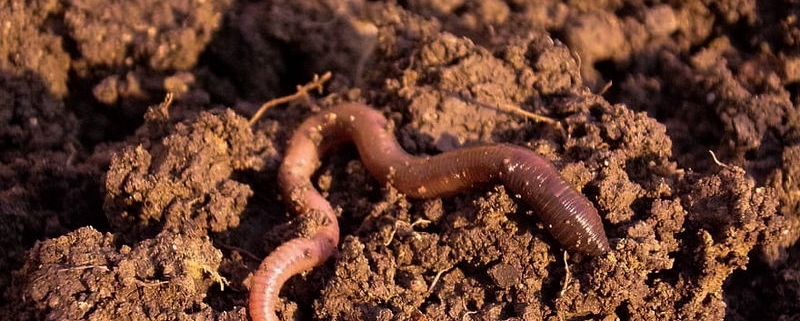Soil Condition
The most critical thing for any garden is the quality of soil. The soil needs to be healthy and nutritious and the simplest way of testing soil quality is to check if it has earthworms and other organisms. Another method of checking soil health is to place fresh cow dung on the soil and wait for a day. If the dried up cow dung is filled with holes and there are organisms around and about, this is an indication of healthy soil.
Soil has to be fortified at different stages. Adding compost at regular intervals near the plant stock keeps the soil’s oxygen content high. This is essential for healthy plant growth. Nutrients are essential for the plants, however, fertilizing the soil too much sometimes leads to profuse foliage growth and the intended fruit/flower production is affected. Therefore, it must be ensured that each plant is nourished to suit its own fertilization needs.
The soil texture should be examined before it is used for planting purposes. Dry leaf content and the presence of other organic matter is an indication of soil that is well suited to grow plants in. It is also important that the soil is well-tilled, allowing water retention and the comfortable growth of underground roots.
The water draining capacity of the soil may also be tested at home. Here’s how to do it:
Take a pot with drain holes and fill it with soil. Water this pot by filling it with water; it should drain excess water through the drain holes at the base, in about 2 seconds of overwatering. In the case of existing plant pots, the drain holes on the underside need to be poked with a pencil, to loosen the soil above the holes and clear any obstructions.
A good soil mix consists of 10% sand, cowdung, and loamy or red soil.
Types of Soils / Mix-Ins
Potting Mix/soil: Potting soil is a premixed medium to grow plants in containers. It typically consists of a mixture of soil, coco peat, compost and sometimes other ingredients like sand. Any good potting mix is loose, well-drained and light to help retain moisture in the soil and allow the roots with access to enough oxygen. Sometimes potting mixes do not contain soil but just compost, coco peat and other fertilizers which may be chemical based, so be sure to check the contents before you buy.
Cocopeat: Cocopeat is a natural growing medium made of coconut husk and dust from the coconut kernel. It is often a key component of potting soil/ mix because it is lightweight and helps retain moisture making it a good additive to growing medium for plants in containers. Cocopeat is also rich in nutrients such as nitrogen, potassium, phosphorous, magnesium and zinc, which are beneficial for farming. It is also used extensively in hydroponic agriculture.
Red Soil (Semman): As the name suggests, red soil is a reddish coloured soil that gets its colour from its high iron content. On its own, its poor for cultivating most crops as it has low water retention, contains very little humus and is deficient in many nutrients like nitrogen, magnesium, and lime but is quite rich in potash. However, red soil makes for a great mix-in with other nutrient dense inputs like FYM or compost as it helps to lighten soil and make it more porous and improves water draining vs. retention capacity.
Farm Yard Manure (FYM): FYM is a type of animal based manure used in agriculture. It is prepared typically with cow dung, cow urine and waste hay/ straw. It is quite commonly used as a fertilizer in farming as it is rich in nitrogen, potassium and phosphorus and encourages soil microbial activity. Sometimes FYM is also prepared using red soil.
Neem cake (Veppai Vidhai Thool): Neem cakes are the by-product of extracting neem oil from neem seeds. It is quite an effective pest deterrent and is added to the soil to kill bad bacteria in the soil. A point to note is that neem oil is quite strong and needs to be mixed with enough soil, for it to not affect plant growth.
REFERENCES
Personal Conversation with Mrs. K. Parimala, Sempulam Sustainable Solutions Private Limited
Personal Conversation with Mr. Alladi Mahadevan, The Organic Farm
https://www.planetnatural.com/potting-mix-recipes/
https://www.thespruce.com/difference-between-potting-soil-potting-mix-847812
https://www.ugaoo.com/knowledge-center/coco-peat-benefits-and-how-to-make-coco-peat/
https://www.thehindu.com/life-and-style/homes-and-gardens/cocopeat-for-your-home-garden/article23393105.ece
Das, S., Jeong, S.Tak, Das, S. & Kim, P.J (2017). “Composted Cattle Manure Increases Microbial Activity and Soil Fertility More Than Composted Swine Manure in a Submerged Rice Paddy”. Frontiers in Microbiology. 8: 1702
http://www.vanashree.in/fym.htm
Conversation with Mr. Karthik from TANHODA
https://www.sciencedirect.com/topics/agricultural-and-biological-sciences/red-soil

